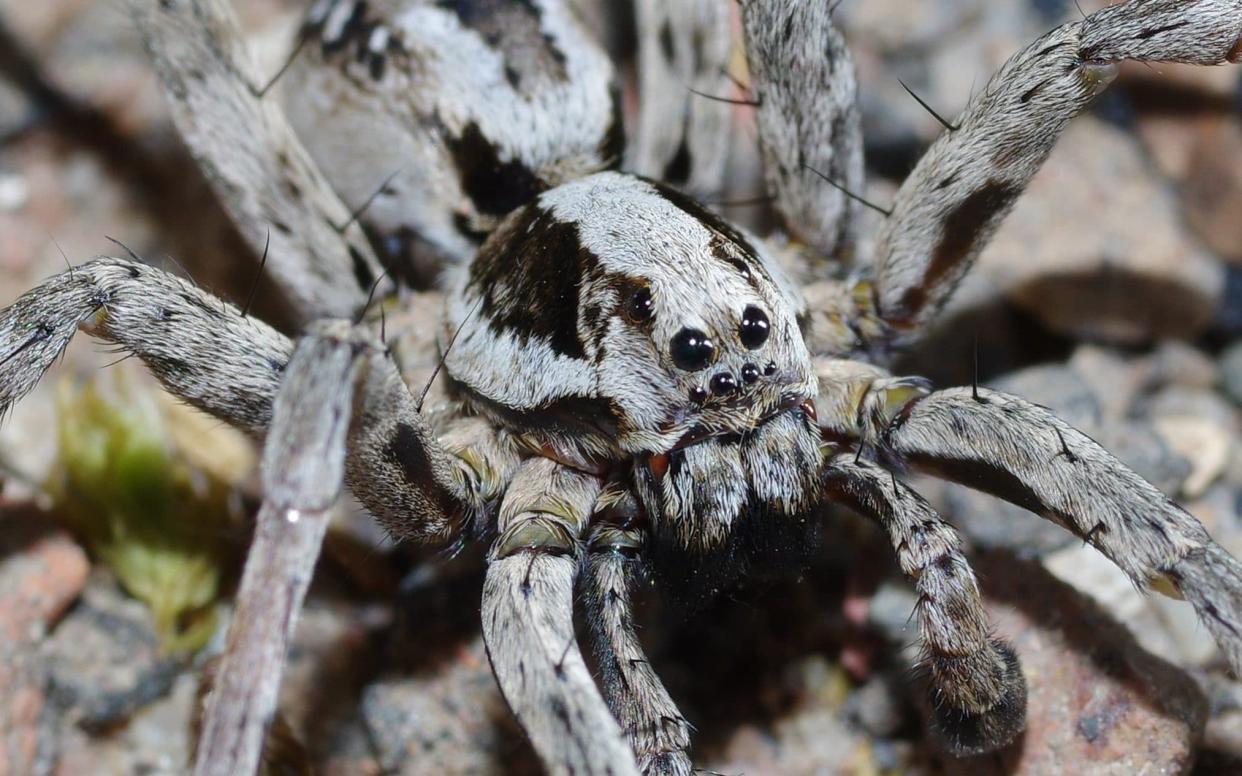'Extinct' giant spider rediscovered on army training area

A giant spider which was feared extinct in the UK has been rediscovered at an army training centre after not being spotted for over 25 years.
Conservationists say that interesting creatures are often unearthed at Ministry of Defence sites because they are undisturbed and unaffected by farming or development.
The Great Fox-Spider is Red-listed as ‘Critically Endangered’ and was feared extinct in the UK as it hadn’t been seen since 1993.
It was discovered by an arachnid-obsessed worker at the Surrey Wildlife Trusts, who had been hunting high and low on MoD land with his torch.
For two years, Mike Waite, spider enthusiast at the Trust, walked around for hours at night in the hopes of finding the nocturnal, ground-dwelling arachnid.
Finally he discovered some unidentifiable immature spiderlings, on MOD land managed by the Amphibian and Reptile Conservation Trust, and then, at last several mature males and one female Great Fox-Spider, which was 55mm or just over two inches in diameter including its hairy, spiny legs.
The delighted naturalist said: “I am naturally over-the-moon to have finally proved the continued existence of the Great Fox-Spider in the UK. Although I’ve always held a latent interest in spiders, as a bona-fide arachnologist, I am still a relative newbie, so am doubly pleased to have made this important contribution to our scientific knowledge.”
Mr Waite now plans to continue his study to gauge the size of the population, looking for their silk-lined burrows over winter.
The spiders are named because of their wolf-like chasing of prey. They love to run across sandy terrain, over gravel and rocks before catching insects. The Great Fox-Spider then pounces, injecting the unfortunate bugs with deadly venom. The spider is then ready to feast on its catch using its strong, fang-bearing front appendages called chelicerae.
Great Fox-Spiders have excellent eyesight with wrap-around vision provided by eight black eyes on its head, or cephalothorax. Two large eyes glint from the top of the head; two large eyes stare out the front; and four smaller eyes form a row just above the spider’s mouth.
Conservationists have praised the MOD for preserving land for important animals.
Rob Free, Weald Reserves Manager, Amphibian and Reptile Conservation (ARC) said: "The discovery of the Great Fox-Spider shows how amazing the MOD heathland is, not just for spiders, but also for Sand Lizard, Smooth Snake, Dartford Warbler, Nightjar, Silver-studded Blue butterfly and Marsh Clubmoss. The spider’s rediscovery is a wonderful exoneration of all the incredibly hard work put in by MOD staff, Conservation Group members, ARC staff and volunteers."
ARC has managed key parts of the site since 1974, with particular emphasis on preventing the endangered Sand Lizard from becoming extinct, and as MOD’s conservation partner, ARC has been managing much of the open heathland on the site since January 2019. Managed for nature’s recovery, the MOD site is recognised as being nationally important for its populations of rare bird, reptile and invertebrate species.
Rich Lowey, Defence Infrastructure Organisation's Head of Technical Services, said: “Many people are unaware of the size and diversity of the Defence estate and its tremendous wildlife richness. It has generally been protected from agricultural intensification and urban development, so it now provides a vital sanctuary for many of the country’s most rare and endangered species and habitats. We are proud to hear that the Great Fox-Spider has survived because of MOD’s commitment and enthusiasm to have positive and active conservation management on the Estate and close integrated working with ARC, Surrey Wildlife Trust and MOD Conservation Groups.”

 Yahoo News
Yahoo News 
